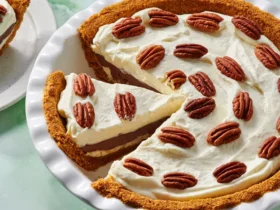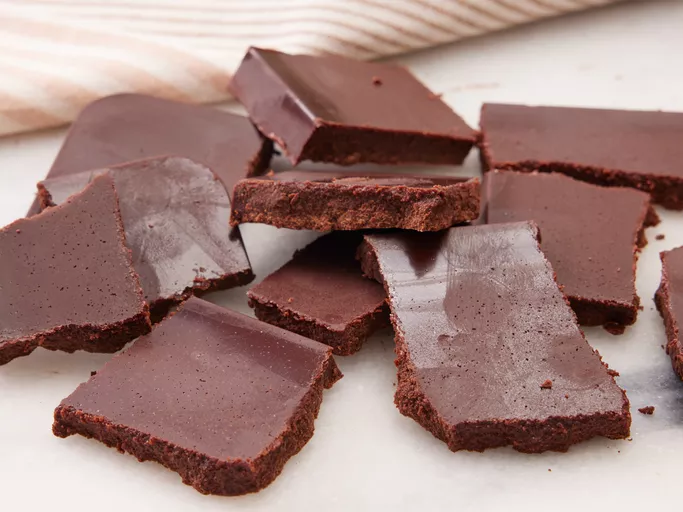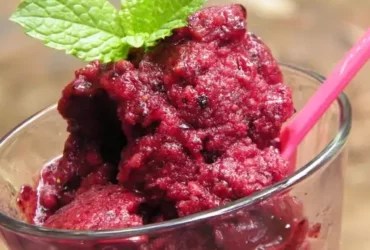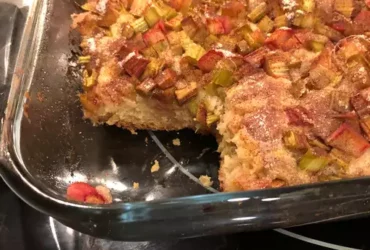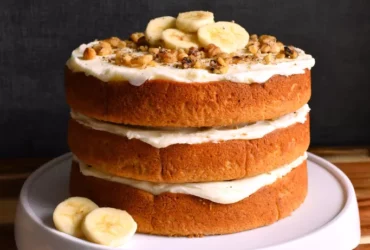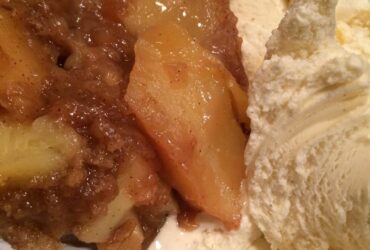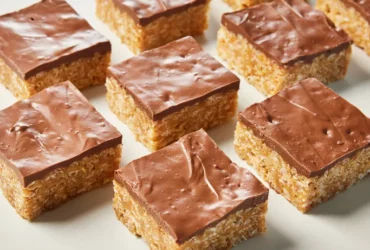Ingredients
Cocoa Mass
Cocoa mass, also known as cocoa liquor or chocolate liquor, is a key ingredient in making dark chocolate from scratch. It’s made by grinding cacao beans to create a smooth, rich paste that has a deep brown color and a slightly bitter flavor.
The process of producing cocoa mass involves several steps, including roasting the cacao beans, winnowing them to remove their shells, and then grinding them into a fine powder. This powder is then mixed with a small amount of oil to create a smooth, spreadable paste that’s rich in flavonoids and other compounds that are essential for making high-quality dark chocolate.
When it comes to the homemade melt-in-your-mouth dark chocolate recipe, cocoa mass plays a crucial role in achieving the right texture and flavor. Using high-quality cocoa mass ensures that the final product has a deep, rich flavor with a satisfying mouthfeel.
The cocoa mass is typically sourced from cacao beans that are of high quality, as it directly affects the taste, aroma, and color of the dark chocolate. Cacao beans are grown in various parts of the world, with countries like Ghana, Brazil, and Ecuador being among the largest producers.
Cocoa mass can be purchased in different forms, including blocks or bars that have a high cocoa content. It’s essential to choose a reputable supplier to ensure that you get high-quality cocoa mass that has been properly processed and stored.
When working with cocoa mass, it’s crucial to handle it carefully to avoid contamination. This includes storing it in an airtight container, keeping it away from heat sources, and handling it only when necessary. It’s also essential to follow the recipe instructions for tempering the chocolate correctly to achieve the right texture.
Tempering is a process that involves heating and cooling the chocolate to create a stable crystal structure that gives dark chocolate its unique flavor and texture. Proper tempering ensures that the chocolate has a smooth, glossy finish and melts in your mouth when you eat it.
The homemade melt-in-your-mouth dark chocolate recipe requires tempering the cocoa mass to achieve the right texture and flavor. Tempering involves heating the chocolate to around 115°F (46°C) to melt all of the crystals, then cooling it down to around 82°F (28°C) to allow the crystals to form again.
This process is repeated several times until the chocolate reaches a stable crystal structure that gives it its unique properties. It’s essential to temper the chocolate correctly to achieve the right texture and flavor in the final product.
Once the cocoa mass has been tempered, it can be mixed with other ingredients like sugar, milk powder, and flavorings to create different flavors of dark chocolate. The ratio of cocoa mass to other ingredients can vary depending on personal preference and the desired taste profile.
The homemade melt-in-your-mouth dark chocolate recipe typically involves mixing the tempered cocoa mass with a combination of sugar, milk powder, and flavorings to achieve the right balance of sweetness and flavor.
Finally, the chocolate mixture is poured into a mold or onto a surface to set before being cut into bars or other shapes. The finished product should have a smooth, glossy finish and melt in your mouth when you eat it.
High quality cocoa mass is essential for a rich, intense flavor
- The quality of ingredients used in making dark chocolate can make all the difference between a rich, intense flavor and a dull, bland taste.
- When it comes to homemade melt-in-your-mouth dark chocolate, high-quality cocoa mass is essential.
- Cocoa mass, also known as cocoa solids or chocolate liquor, is the main ingredient in dark chocolate and gives it its distinctive flavor and color.
Main Characteristics of High-Quality Cocoa Mass
- High cocoa butter content
- Cocoa mass with a high percentage of cocoa butter will have a smoother, more mellow flavor.
This is because cocoa butter adds a rich, velvety texture and helps to balance out the bitterness of the cocoa solids.
What to Look for in High-Quality Cocoa Mass
- Dark brown or black color
- This indicates that the cocoa mass has not been bleached or refined, which can affect its flavor and nutritional content.
The ideal cocoa mass should have a deep, rich aroma that is reminiscent of dark chocolate.
Benefits of High-Quality Cocoa Mass
- Rich in antioxidants
- Cocoa mass contains high levels of flavonoids and other polyphenols, which can help to protect against cell damage and inflammation.
This makes it an excellent choice for those looking to incorporate more antioxidants into their diet.
How to Choose the Right Cocoa Mass
When selecting a cocoa mass for your homemade melt-in-your-mouth dark chocolate, look for a product that is labeled as ‘high-quality’ or ‘food-grade.’
This ensures that the cocoa mass has not been contaminated with additives or preservatives, which can affect its flavor and nutritional content.
What Not to Use
Avoid using cocoa mass that has been heavily processed or refined, as this can strip it of its natural flavors and nutrients.
Similarly, do not use cocoa mass that has been mixed with other ingredients, such as sugar or milk powder, unless you are looking for a specific flavor profile in your dark chocolate.
Tips for Working with Cocoa Mass
- Grind the cocoa mass to a fine powder before using it in your recipe.
This will help to release its flavors and aromas, allowing you to create a rich and intense dark chocolate experience.
Conclusion
In conclusion, high-quality cocoa mass is essential for creating a rich, intense flavor in your homemade melt-in-your-mouth dark chocolate recipe.
By choosing the right type of cocoa mass and following proper guidelines for preparation, you can create a delicious and nutritious dark chocolate experience that is sure to impress.
Look for Dutch process or natural cocoa, depending on desired flavor profile (University of Guelph)
To create a delicious and authentic homemade melt-in-your-mouth dark chocolate, it’s essential to choose the right type of cocoa powder. The University of Guelph recommends using either Dutch-process or natural cocoa, depending on your desired flavor profile.
Dutch-process cocoa has undergone an alkalization process that removes some of the acidity and gives the chocolate a milder, more bitter taste with a deeper red-brown color. This type of cocoa is ideal for those who prefer a richer, more complex flavor in their dark chocolate.
Natural cocoa, on the other hand, has not undergone any processing and retains its natural acidity and earthy flavor profile. Natural cocoa gives the chocolate a lighter brown color and a brighter, more acidic taste that is perfect for those who want a tangier dark chocolate experience.
When selecting your cocoa powder, look for high-quality Dutch-processed or natural cocoa powders with minimal added ingredients and no artificial flavorings. Some popular brands include Valrhona, Cacao Barry, and Callebaut.
The quality of the cocoa powder is crucial in creating a rich and smooth dark chocolate. Opting for a lower-grade or generic cocoa powder may result in a less-than-desirable flavor and texture in your homemade chocolate.
Use 100% cocoa mass for the most authentic taste experience
To create a truly authentic and indulgent dark chocolate experience at home, it’s essential to start with the highest-quality ingredient – 100% cocoa mass.
This premium ingredient is extracted from fermented cacao beans, which are sourced from the pods of the Theobroma cacao tree.
Cocoa mass is essentially the raw material that will become your delicious dark chocolate. It’s a rich, velvety powder with a deep, intense flavor profile that sets the stage for an exceptional gastronomic experience.
When choosing 100% cocoa mass, look for products that are labeled as “single-origin” or “small-batch.” These products often have more nuanced and complex flavor profiles compared to industrially produced chocolate powders.
The reason behind this is that single-origin cacao beans have a distinct terroir, which influences the flavor of the final product. This unique characteristic makes 100% cocoa mass an exciting ingredient for chocolatiers to work with.
One important note: when working with 100% cocoa mass, it’s crucial to have the right ratio of sugar and other ingredients in your recipe to balance out the intense bitterness and acidity of the cacao.
This is particularly true in a recipe like the one you’re about to attempt, where the aim is to create a melt-in-your-mouth dark chocolate experience. A delicate balance between flavors will result in a rich, creamy, and indulgent treat that’s sure to satisfy even the most discerning palates.
Chocolate-Making Process
Cocoa Butter Melting and Mixing
The process of making chocolate at home involves several stages, including Cocoa Butter Melting and mixing it with sugar, milk powder, and other ingredients to create a smooth and creamy dark chocolate.
Here’s a step-by-step guide to making melt-in-your-mouth dark chocolate
Cocoa Butter Melting
- Melt the cocoa butter in a double boiler or a heatproof bowl set over a pot of simmering water.
- Cut the cocoa butter into small pieces to ensure it melts evenly and quickly.
- Heat the cocoa butter until it reaches a temperature between 105°F (40°C) and 115°F (46°C). This is an important step, as the optimal melting range helps prevent the formation of Sachetons or blooming.
Mixing with Sugar and Milk Powder
- Once the cocoa butter has melted, remove it from the heat source and let it cool slightly.
- Add Granulated Sugar, milk powder, and any other desired ingredients (such as vanilla or nuts) to a separate bowl.
- Mix these dry ingredients until well combined.
Combining the Chocolate Mass
- Slowly pour the melted cocoa butter into the mixture of sugar and milk powder, stirring constantly with a rubber spatula or wooden spoon to prevent lumps from forming.
- Mix until smooth and creamy. The chocolate mass should be shiny and have a uniform color.
- Taste and adjust the Chocolate’s Flavor Profile as needed by adding more sugar, milk powder, or other ingredients.
Tempering and Molding
- Cool the chocolate mass to around 82°F (28°C) for tempering. This allows the crystals in the Cocoa Butter to form a stable crystal structure, giving the chocolate its glossy finish and snappy texture.
- Pour or spoon the tempered chocolate into your desired molds, such as chocolate bars, truffles, or decorations.
Final Touches
Let the chocolate set at room temperature or in the refrigerator for about an hour. Once hardened, you can remove it from the mold and enjoy your homemade dark chocolate creations!
Melt high quality cocoa butter to around 105°F (40°C) using a double boiler or thermometer controlled heating
To create high-quality chocolate, it’s essential to start with premium ingredients, including pure cocoa butter and dark cocoa beans. The first step in making delicious homemade melt-in-your-mouth dark chocolate is to melt the high-quality cocoa butter to around 105°F (40°C). This can be achieved using a double boiler or a thermometer-controlled heating setup.
Here’s how to melt the cocoa butter safely and effectively
Select a suitable container
Use a heatproof glass bowl or a stainless steel saucepan that fits over another pot or a dedicated double boiler. This will allow for gentle and even heating without direct flame exposure.
Add cocoa butter
Measure out the desired amount of high-quality cocoa butter and place it in the heatproof container. For most recipes, you’ll need around 1-2 pounds (0.5 to 1 kg) of cocoa butter for a decent yield of chocolate.
Heat control
If using a double boiler or a dedicated thermometer-controlled heating setup, ensure that the temperature is set to 105°F (40°C). Monitor the temperature closely and adjust as needed to maintain the desired heat level. For a traditional double boiler, you can also use a low flame and gently stir the cocoa butter occasionally.
Stirring
Use a spatula or spoon to gently stir the melted cocoa butter occasionally, ensuring even heating and preventing it from burning or seizing up. You should see the cocoa butter become smooth and fluid as it reaches the desired temperature.
Maintain temperature
Keep the melted cocoa butter at around 105°F (40°C) for about 10-15 minutes to allow it to reach its optimal state. This is crucial for developing the chocolate’s flavor profile and ensuring a smooth, creamy texture in your finished product.
Once you have successfully melted the high-quality cocoa butter, proceed with the next steps of making homemade melt-in-your-mouth dark chocolate: mixing the cocoa butter with other ingredients, tempering the mixture for a stable crystal structure, and finally shaping it into delicious chocolate creations.
Add sugar, salt, and any additional flavorings, if desired, and mix until well combined
The process of making dark chocolate from scratch involves several steps that require patience, attention to detail, and a bit of creativity.
Step 1: Melt the Cocoa Butter
Cocoa butter is a key component in making high-quality dark chocolate, as it adds a rich and smooth texture. To melt the cocoa butter, place it in a double boiler or a heat-proof bowl set over a pot of simmering water.
Step 2: Combine the Cocoa Nibs
Once the cocoa butter has melted, add 1 cup of high-quality cocoa nibs to the mixture. The cocoa nibs are the dried and fermented seeds of the cacao tree, and they contain most of the flavor and nutrients in chocolate.
Step 3: Grind the Cocoa Nibs
Grind the cocoa nibs into a fine paste using a food processor or a grinder. This will help to release the flavors and oils from the nibs, which will then be absorbed by the cocoa butter.
Step 4: Conch the Mixture
Conching is the process of agitating the chocolate mixture for an extended period, which helps to develop the flavor and texture. Use a spatula or a conching machine to mix the chocolate for at least 30 minutes, until it has reached a smooth and glossy consistency.
Step 5: Add Sugar and Salt
Add 1 cup of granulated sugar to the chocolate mixture and mix well. You can also add a pinch of salt to balance out the sweetness. If you want to add additional flavorings, such as vanilla or nuts, now is the time to do it.
Step 6: Tempering the Chocolate
Tempering is an optional step that involves heating and cooling the chocolate to create a stable crystal structure. This will give your dark chocolate a smooth and glossy finish. To temper the chocolate, heat it to around 105°F (40°C), then cool it to around 80°F (27°C). Repeat this process several times until the chocolate has reached a stable temperature.
Step 7: Pour into Molds
Once the chocolate has been tempered and mixed well with sugar, salt, and any additional flavorings, pour it into molds of your choice. You can use silicone, metal, or even stone molds to create unique shapes and designs.
Step 8: Allow to Set
Allow the chocolate to set at room temperature for at least 30 minutes. This will help the chocolate to harden and become more stable. If you’re in a hurry, you can also put it in the refrigerator for about 10-15 minutes.
Step 9: Enjoy Your Homemade Dark Chocolate
Once the chocolate has set, remove it from the molds and enjoy your delicious homemade dark chocolate! You can store it in an airtight container at room temperature for up to several weeks.
Fold in the melted cocoa mass and continue mixing until fully incorporated
The process of making homemade dark chocolate involves several steps, but one crucial aspect is folding in the melted cocoa mass.
To do this effectively, it’s essential to have all your ingredients and equipment ready for use, including high-quality cocoa beans or cocoa nibs, sugar, and a double boiler or a heatproof bowl set over a pot of simmering water.
First, melt the cocoa mass in a separate heat-proof bowl placed over the pot of simmering water. This process involves gently heating the cocoa mass until it reaches a smooth and liquid consistency, usually around 105°F to 115°F (40°C to 46°C).
Meanwhile, combine the sugar, milk powder (optional), and any other desired flavorings in a separate bowl. This mixture is known as the “sugar blend.”
Once the cocoa mass has melted and reached the ideal temperature, carefully remove it from the heat source or double boiler.
Using a spatula, gently folding technique, combine the sugar blend with the melted cocoa mass in a steady, smooth motion. Continue this process until the two are fully incorporated and well mixed.
The key here is to maintain a gentle flow of the mixture while introducing the sugar blend into the cocoa mass. This helps avoid developing any air pockets or creating an unpleasant texture.
Continue mixing the chocolate mixture for several minutes, occasionally stopping to scrape down the sides of the bowl and ensure that everything is well combined.
This folding process will eventually yield a smooth, creamy, and even chocolate mixture. The finished product will be free of lumps or air pockets and have a rich, velvety texture when cooled.
Tasting and Finishing
Tempering and Conching
Tasting and finishing are crucial steps in creating exceptional dark chocolate at home. Tasting involves evaluating the flavor, texture, and overall quality of the chocolate. During this process, you will assess if any adjustments need to be made to achieve the perfect taste and mouthfeel.
Tempering is a process used to give chocolate a smooth and glossy finish while maintaining its crystal structure for stable snap when broken. Tempered chocolate is easier to handle and has a more appealing appearance. It can take some practice to master the tempering technique, but understanding the basics will significantly improve your chocolate-making skills.
Conching refers to the process of mixing and aerating the chocolate during its production or post-heat processing. This process typically involves agitating the mixture of cocoa butter and sugar in a machine to develop the desired flavor profile and texture. Conching can range from a few minutes to several hours, with different methods producing distinct flavor profiles.
When it comes to making melt-in-your-mouth dark chocolate at home, you will need to carefully balance the ratio of fat (cocoa butter or coconut oil) to sugar, as well as control the processing temperature and conching time. By mastering these aspects and perfecting your tempering technique, you can produce high-quality, delicious dark chocolate that rivals store-bought varieties.
Allow the chocolate to cool and temper for a smooth, glossy finish (University of Wiscons in Madison)
Tasting and finishing are two crucial steps in the process of creating melt-in-your-mouth dark chocolate at home.
When it comes to tasting, this refers to sampling the chocolate as you work with it to ensure that it meets your desired level of flavor and texture.
This is particularly important when working with dark chocolate, which can be quite bitter if not balanced correctly.
Finishing, on the other hand, involves allowing the chocolate to cool and temper properly in order to achieve a smooth and glossy finish.
Tempering is a process that gives chocolate its characteristic snap when broken, as well as a smooth and even texture.
At the University of Wisconsin-Madison, they emphasize the importance of tempering for achieving the perfect finish in homemade dark chocolate recipes.
To temper your chocolate properly, you’ll want to start by allowing it to cool down to around 82-86°F (28-30°C) before heating it up to around 115°F (46°C).
This temperature range is critical for developing the right crystalline structure in the chocolate that gives it a smooth and glossy appearance.
Once you’ve heated the chocolate to the proper temperature, allow it to cool down slowly and naturally until it reaches a temperature of around 82-86°F (28-30°C) again.
This slow cooling process is essential for allowing the chocolate to set properly and develop its desired texture and appearance.
By following these steps and allowing your chocolate to temper correctly, you can achieve a smooth and glossy finish that’s perfect for indulging in melt-in-your-mouth dark chocolate treats.
Use a conche or other mixing equipment to develop the flavor and texture over time
The process of Tasting and Finishing is a crucial step in creating high-quality dark chocolate, especially when making it at home.
This step involves evaluating the flavor and texture of your chocolate after it has been tempered, poured into molds, and allowed to set.
Tasting and Finishing are essential because they help you identify any areas where the chocolate needs improvement.
As you taste the chocolate, pay attention to its flavor profile, including notes of fruit, nuts, or spices, as well as its texture.
Is the chocolate too sweet? Does it have a grainy or chalky mouthfeel?
Identify any imperfections and adjust your recipe accordingly. You may need to tweak the ratio of cocoa solids to sugar or add more cocoa butter to improve the texture.
If you’re using a conche or other mixing equipment, now is the time to use it to develop the flavor and texture of the chocolate over time.
A conche is a device that breaks down the particles in the chocolate, allowing them to mingle and mature together. This process can take anywhere from 12 hours to several days.
By using a conche or other mixing equipment, you’re giving your chocolate the opportunity to develop its full flavor potential and achieve a smooth, velvety texture.
The length of time you allow the chocolate to mature will depend on the specific type of chocolate you’re making and the desired flavor profile.
For example, if you’re making a dark chocolate with a high cocoa content, you may want to allow it to mature for 24-48 hours to bring out its rich, complex flavors.
On the other hand, if you’re making a milk chocolate, you may want to mature it for just 12-24 hours to avoid over-developing the flavor and losing its creamy texture.
Remember, the key to creating high-quality dark chocolate is to be patient and allow it to mature slowly over time. With practice and experimentation, you’ll develop your own unique technique for Tasting and Finishing your homemade dark chocolate.
Experiment with different flavor profiles and addins, such as nuts, fruit, or spices
The art of tasting and finishing lies at the heart of creating a truly exceptional homemade melt-in-your-mouth dark chocolate recipe.
This process involves not only carefully selecting high-quality ingredients but also experimenting with different flavor profiles and add-ins to create a unique and tantalizing experience for the palate.
One approach to enhancing the flavor profile is by incorporating nuts, which can add a delightful crunch and depth of flavor to the chocolate. Some popular nut options include
- Casual: Almonds or hazelnuts for a subtle nutty flavor
- Mid-range: Pecans or walnuts for a more pronounced nuttiness
- Epicurean: Pistachios or macadamia nuts for an exotic and luxurious taste
Fruit can also be added to create a sweet and fruity twist on the classic dark chocolate recipe. Some options include
- Raspberry or strawberry puree for a tart and fruity flavor
- Mango or pineapple chunks for a tropical and exotic taste
- Cranberry or orange zest for a festive and tangy twist
Spices, on the other hand, can add an intriguing warmth and depth to the chocolate. Some popular spice options include
- Nutmeg or cardamom for a warm and aromatic flavor
- Cinnamon or cayenne pepper for a spicy kick
- Ginger or cloves for a sweet and savory taste
Remember, the key to creating an exceptional homemade melt-in-your-mouth dark chocolate recipe is to experiment and find the perfect balance of flavors that suits your taste buds.
Don’t be afraid to try new combinations and adjust the proportions of each ingredient to create a truly unique flavor profile. With practice and patience, you’ll become a master chocolatier and be able to craft chocolates that are sure to impress even the most discerning palates!
- Best Datanyze Alternatives for 2025 - April 24, 2025
- Best Hunter.io Alternatives for 2025 - April 22, 2025
- Best Lead411 Alternatives for 2025 - April 22, 2025


